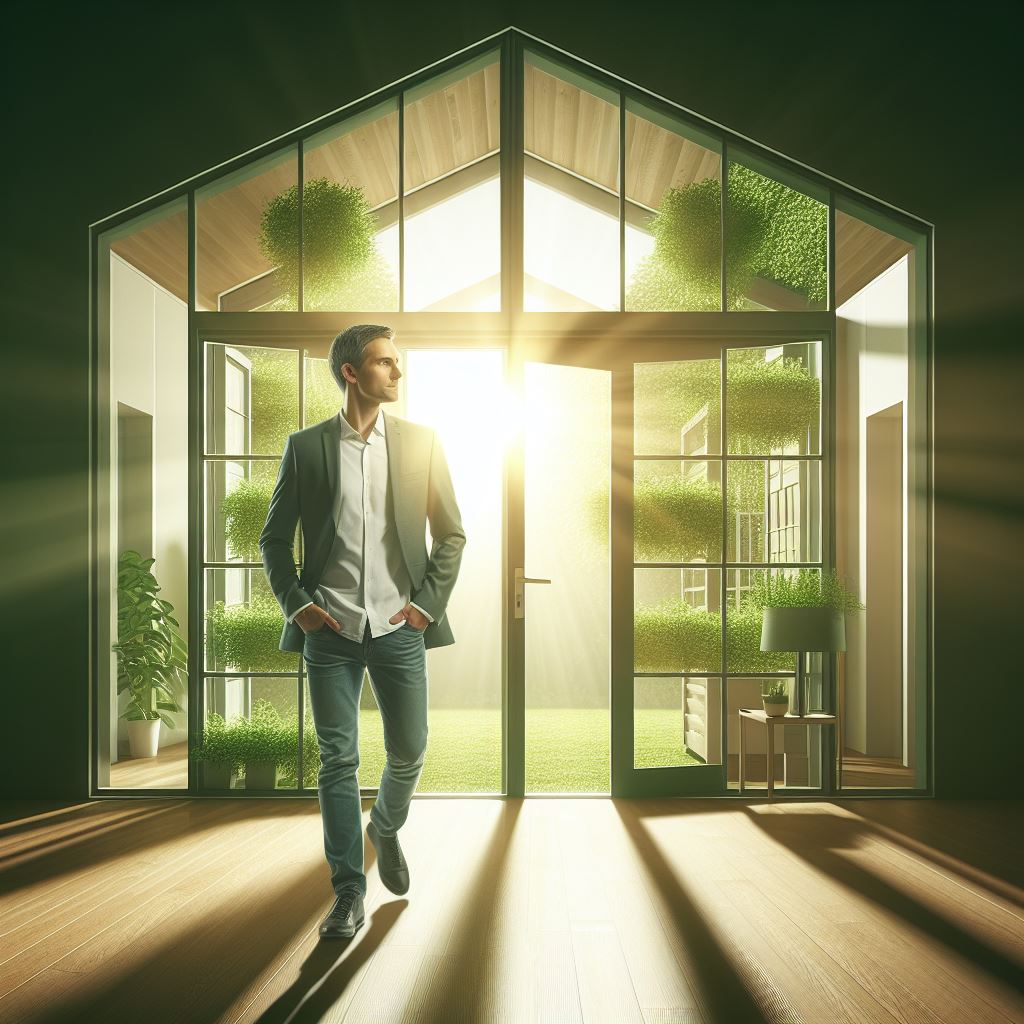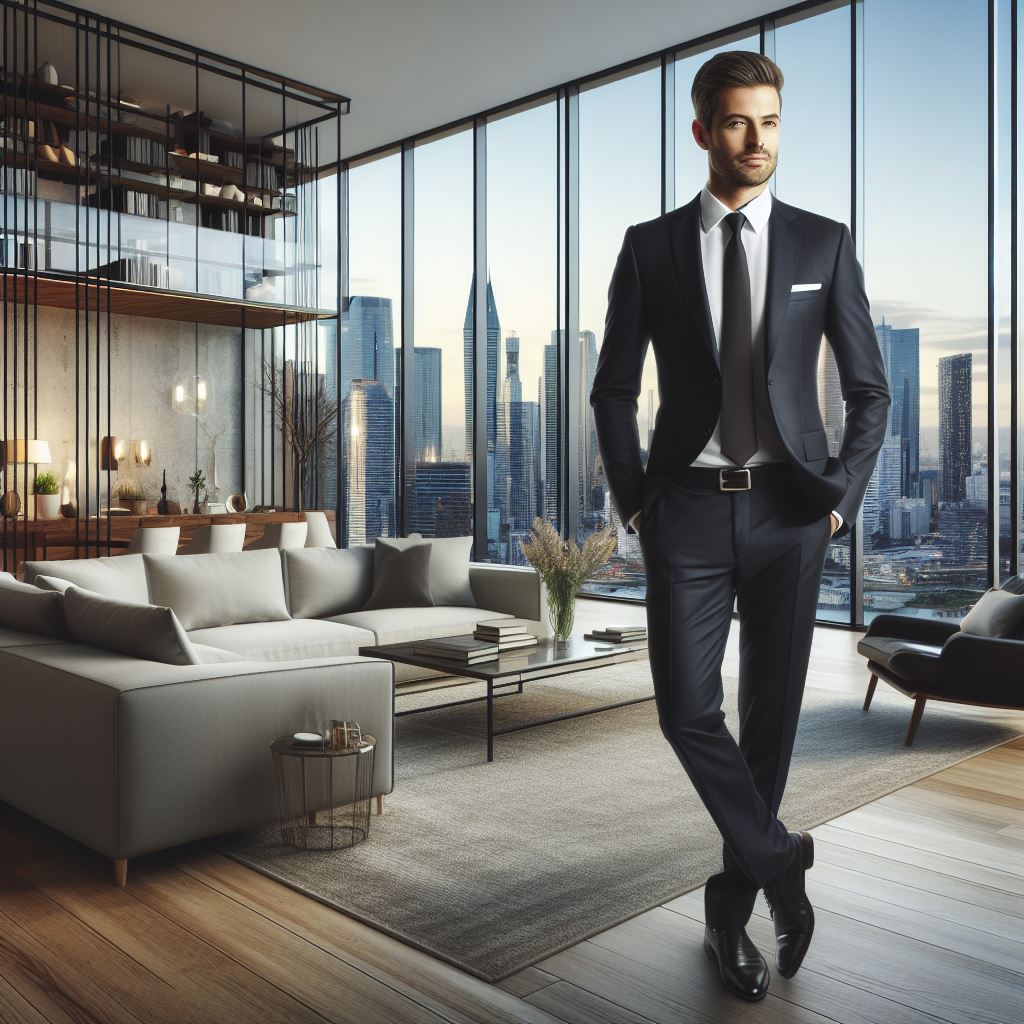Introduction
Green buildings, aiming to reduce environmental impact and enhance occupant well-being, are designed, built, and operated sustainably.
These buildings employ various strategies to minimize energy consumption, conserve water, reduce waste, and utilize environmentally friendly materials.
Over the past few decades, there has been a notable surge in the adoption of green building practices in the United States.
The US Green Building Council’s LEED certification program actively promotes green building standards nationwide, encouraging environmentally responsible construction.
The rise of green buildings in the United States has reshaped the landscape of the real estate industry.
The demand for sustainable buildings prioritizing energy efficiency and environmental performance grows as individuals and businesses become more conscious.
Historical Context
Origins of the green building movement in the US
The US saw the rise of green buildings fueled by evolving environmental consciousness, early advocacy, and key legislation.
It all began with growing concerns over energy conservation and environmental sustainability in the 1960s and 1970s.
Early developments and initiatives in green building practices
Architects, environmentalists, and research organizations played crucial roles in promoting the concept of green buildings.
The establishment of the Solar Energy Research Institute in 1977 focused on incorporating renewable energy into building designs.
In the 1980s, the US Green Building Council (USGBC) was formed to spearhead sustainable building practices.
Key milestones and legislation promoting green buildings
Legislation also played a vital role in promoting sustainable building practices.
The Energy Policy Act of 1992 introduced federal energy-efficiency standards, and state and local governments started adopting green building codes and standards.
Further milestones included the launch of the LEED certification program in 2000, which cemented the importance of energy efficiency and sustainability.
The Energy Independence and Security Act of 2007 mandated high-performance building standards for federal projects.
The American Recovery and Reinvestment Act of 2009 fueled energy efficiency upgrades in existing buildings, promoting sustainable practices.
Today, green buildings have become the norm, with increased public awareness and demand for energy-efficient and sustainable structures.
In the next section, we will explore the economic and environmental benefits of green buildings and their role in shaping a more sustainable future.
Read: Urban vs Rural Real Estate: What to Choose
Factors Driving the Rise of Green Buildings
Environmental awareness and sustainability trends
With climate change becoming an increasingly pressing issue, more people are recognizing the importance of reducing their carbon footprint.
Green buildings offer a tangible way to contribute to environmental sustainability by minimizing energy consumption, conserving water, and reducing waste.
As public awareness of environmental issues continues to rise, the demand for green buildings is expected to grow even further.
Cost savings and long-term financial benefits
Beyond their environmental benefits, green buildings also offer significant financial advantages.
While the initial costs of constructing a green building may be higher than those of traditional buildings, the long-term savings are substantial.
Energy-efficient features such as solar panels, insulation, and efficient HVAC systems can lead to significant reductions in utility bills over time.
Additionally, green buildings often have higher property values and lower operating costs, making them a sound investment for property owners and developers.
Health and well-being considerations
Another factor driving the rise of green buildings is the growing awareness of the impact of indoor environments on human health and well-being.
Studies have shown that occupants of green buildings experience fewer sick days, increased productivity, and improved overall well-being compared to those in traditional buildings.
As people prioritize their health and well-being, the demand for green buildings that support these goals is expected to continue to rise.
Government incentives and regulations
Government incentives and regulations also play a crucial role in promoting the adoption of green building practices.
Governments incentivize green building with tax credits, grants, and rebates to encourage developers and property owners.
Additionally, many jurisdictions have implemented building codes and regulations that require or incentivize sustainable building practices.
Read: REITs: Easy Real Estate Investment
Increasing Popularity and Adoption
Green buildings rise remarkably in the United States as environmental concerns dominate architecture and construction discussions.
This section delves into the factors driving the surge in popularity and adoption of green building practices across the nation.
Growth of Green Building Certifications and Rating Systems
One of the key indicators of the increasing emphasis on sustainability in the construction industry is the proliferation of green building certifications and rating systems.
Organizations such as the U.S. Green Building Council (USGBC) and its Leadership in Energy and Environmental Design (LEED) certification have played a pivotal role in setting standards for environmentally responsible building design and operation.
LEED certification, in particular, has become a sought-after credential for developers and property owners, signifying a commitment to reducing environmental impact and improving occupant health and wellbeing.
Rise in the Number of Green Building Projects Across the US
The past decade has witnessed a remarkable uptick in the number of green building projects being undertaken across the United States.
From residential homes to commercial skyscrapers, developers are increasingly incorporating sustainable design principles into their projects.
This surge can be attributed to a variety of factors, including growing awareness of climate change, regulatory incentives promoting energy efficiency, and the proven cost savings associated with green buildings over their lifecycle.
Impact of Green Buildings on Property Values and Market Demand
Studies have consistently shown that green buildings command higher property values and experience greater market demand compared to their conventional counterparts.
Buyers and tenants are increasingly prioritizing sustainability and are willing to pay a premium for properties that offer energy efficiency, improved indoor air quality, and reduced environmental footprint.
Moreover, green buildings often enjoy lower operating costs, making them financially attractive investments in the long run.
In essence, the increasing popularity and adoption of green buildings in the United States are driven by a combination of regulatory pressures, market demand, and growing awareness of the benefits of sustainable design.
As the industry continues to evolve, green buildings are poised to play a central role in shaping the future of architecture and construction, fostering healthier, more resilient communities for generations to come.
Read: Investing in Land: Potential and Pitfalls

Benefits of Green Buildings
Green buildings are not only a trend but a necessity in the modern world, especially in the United States where sustainability is becoming increasingly vital.
As we delve into the benefits of green buildings, it becomes evident why they are gaining momentum across the nation.
Energy Efficiency and Reduced Carbon Footprint
One of the primary advantages of green buildings is their superior energy efficiency.
Through innovative design, materials, and technologies, these buildings minimize energy consumption, leading to significant cost savings for owners and tenants alike.
Moreover, by reducing reliance on fossil fuels, green buildings play a crucial role in mitigating climate change and lowering carbon emissions, contributing to a more sustainable future.
Improved Indoor Air Quality and Occupant Health
Green buildings prioritize indoor environmental quality, which directly impacts occupant health and well-being.
By employing advanced ventilation systems, low-emission materials, and proper moisture control, these structures maintain optimal indoor air quality, reducing the risk of respiratory illnesses, allergies, and other health issues.
Consequently, occupants enjoy a healthier and more comfortable living or working environment.
Enhanced Productivity and Tenant Satisfaction
Research has shown that green buildings promote productivity and enhance tenant satisfaction.
Features such as abundant natural light, access to green spaces, and ergonomic design elements contribute to a more stimulating and enjoyable atmosphere.
As a result, occupants experience higher levels of concentration, creativity, and overall satisfaction, ultimately leading to increased productivity and tenant retention.
Potential for Increased Resale Value and Rental Rates
Investing in green buildings offers lucrative financial benefits, including higher resale value and rental rates.
As sustainability becomes a priority for both investors and tenants, green-certified properties command premium prices in the market.
In a nutshell, the rise of green buildings in the US is not just a trend but a transformative shift towards a more sustainable built environment.
Read: Appalachia’s Real Estate Outlook for 2024
Challenges and Obstacles
Green building initiatives in the United States have undoubtedly gained momentum in recent years, but they are not without their fair share of challenges and obstacles.
From financial barriers to misconceptions about green practices, navigating these hurdles is essential for the continued growth of sustainable construction.
Upfront costs and financial barriers
One of the primary challenges facing the widespread adoption of green building practices is the perception of high upfront costs.
While it’s true that integrating sustainable features often requires initial investment, the long-term benefits far outweigh these expenses.
However, convincing stakeholders to prioritize sustainability over short-term financial gains remains a hurdle.
To address this, incentives such as tax breaks and subsidies can make green building more financially appealing, ultimately offsetting initial costs and encouraging broader adoption.
Limited awareness and understanding among stakeholders
Another significant obstacle is the limited awareness and understanding of green building principles among stakeholders.
From developers and architects to homeowners and tenants, many individuals lack the knowledge needed to make informed decisions about sustainable construction.
Resistance to change and misconceptions about green building practices
Resistance to change and misconceptions about green building practices pose significant challenges to their widespread adoption.
Some may view sustainability as synonymous with inconvenience or sacrifice, fearing that green buildings will compromise comfort or functionality.
Debunking myths and highlighting benefits: green construction improves air quality, cuts costs, and boosts market value.
Overcoming challenges like upfront costs, limited awareness, and resistance to change is crucial for sustained growth in US green buildings.
Future Outlook
The future outlook for the rise of green buildings in the US is promising, with continued growth and expansion of sustainable practices.
As awareness grows, individuals, businesses, and communities actively embrace green buildings due to environmental impact awareness.
Continued growth and expansion of green building practices:
The demand for green buildings is expected to grow exponentially as people recognize the numerous benefits they offer.
Green buildings offer wise long-term investments, reducing energy, lowering costs, improving air quality, and enhancing productivity and health.
Advancements in technology and innovative green building solutions:
The future will see significant advancements in technology and the development of innovative solutions to make green buildings even more efficient and sustainable.
Accessible, affordable smart grids, energy-efficient appliances, and renewable energy systems will widely adopt green building practices.
Importance of integrating sustainability in urban planning and development:
Integrating sustainability in urban planning and development is crucial to creating environmentally friendly and resilient cities.
Potential policy changes and incentives to further drive green building adoption
To accelerate the transition towards a greener built environment, governments at all levels must implement supportive policies and provide incentives.
The US shows promising growth in green buildings, fueled by tech advancements, urban sustainability, and potential policy changes.
Individuals, businesses, and governments prioritize environmental responsibility, making green buildings the standard for construction, fostering sustainability.
Conclusion
The rise of green buildings in the US signifies a shift towards sustainability in the real estate industry.
These buildings offer numerous benefits such as energy efficiency, improved indoor air quality, and reduced environmental impact.
The increased adoption of green building practices has not only benefited the environment but also improved the well-being and productivity of occupants.
Green buildings are proven to reduce energy consumption, lower operational costs, and enhance overall occupant satisfaction.
The growing demand for green buildings reflects a desire for a sustainable future in the real estate sector.
With advancements in technology and increasing awareness about climate change, green buildings have the potential to become the standard for new constructions.
By continuing to prioritize sustainability and implementing green building practices, the industry can contribute to a healthier and more eco-friendly future.
In the end, the rise of green buildings in the US is a promising trend that showcases the industry’s commitment to sustainability.




